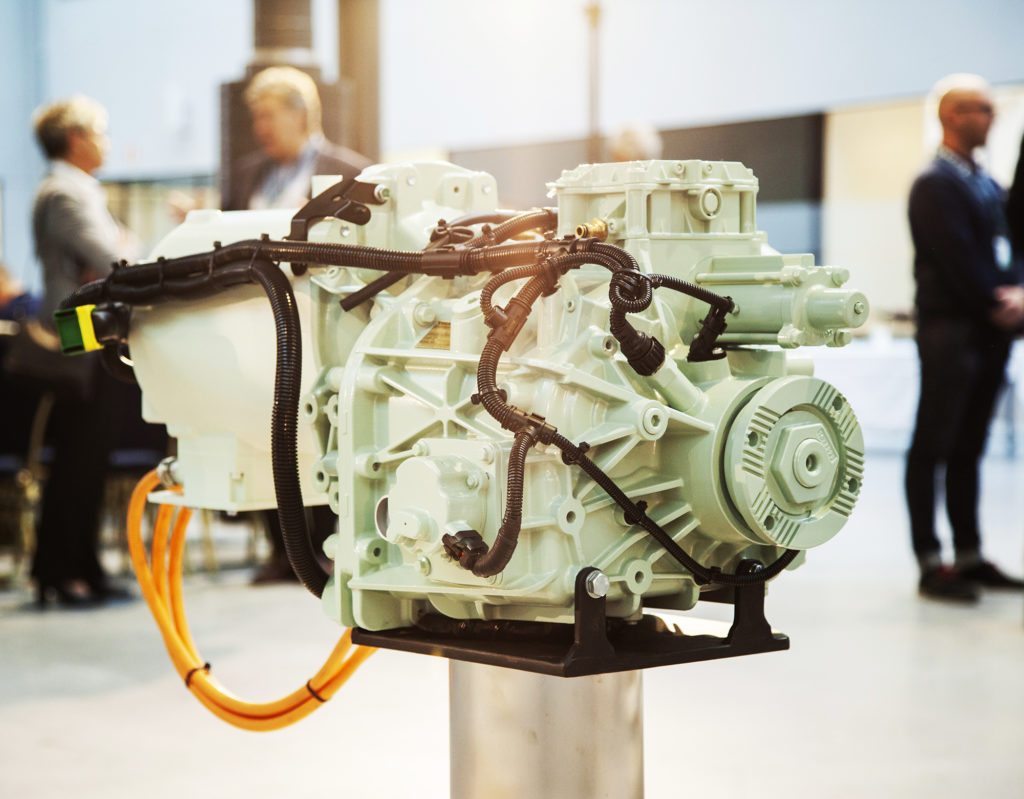Further to last week’s reports and tweets from the Volvo/Skanska ‘Electric Site’, advances in electric-driven technology and improved battery capacity are powering Volvo Penta’s pledge to offer electrified solutions by 2021. Its engineers are securing, testing and evaluating electric drive solutions that are set to help power the next generation of the company’s products. Collaboration is the key, and Volvo Penta is working closely with customers and suppliers to explore viable electric driveline solutions.
“The needs of environmental sustainability and customers’ business requirements are getting ever closer, as electrified options become increasingly feasible,” says Peter Granqvist, Chief Technology Officer at Volvo Penta. “The individual needs across industries such as mining and materials handling do vary. However, there is now a clear trend from all customer groups: the need for cleaner, quieter and more efficient drivelines.”
In leveraging the Volvo Group’s proven platforms, harnessing the latest technology for energy storage in batteries, and in collaborating directly with customers, Volvo Penta says it “will create win-win electromobility solutions that allow customers to move their businesses forward.”
An undoubted benefit of being part of the Volvo Group is access to advanced technology. Volvo Penta is further developing the proven electromobility platform that has successfully been used by Volvo’s buses and trucks divisions for many years. The company’s new workshop focusing on electrification is located opposite the Volvo Group’s 140-strong electromobility team. Synergies between different applications are being explored in close collaboration, as is the development of new solutions for Volvo Penta’s customers.
The limiting factors for creating commercially viable heavy-duty electric solutions have been battery capacity, weight and charging times. But developments over the past decade have led to the proliferation of new battery powered devices from smartphones, drones, and electric bikes all the way up to grid-scale energy storage systems.
“This wide deployment of battery technology means there is increasing knowledge and capacity to be shared across industries,” says Thulin. “Increasing energy density and smaller batteries allow for novel machine designs. And lower cost means the cost of ownership is reaching a point where, for several applications, it will be more profitable to operate an electric machine rather than one with a conventional engine. In addition, shorter charging times and more available charging infrastructure at customers’ depots and other hub locations will also supercharge the case for electrification.”
One key driver for Volvo Penta in developing electric solutions is to support customers in future-proofing their businesses. As such, the company is collaborating with customers to assess the best options and to run pilot projects to determine the direction of future product development.
“It’s essential to spend time with customers – both OEMs and operators – to understand how they can benefit from electrification, how machines and equipment are intended to be used, and how and where charging can be incorporated in the operation” says Thulin. “By understanding all the details we can propose a system fine-tuned to their needs.”











